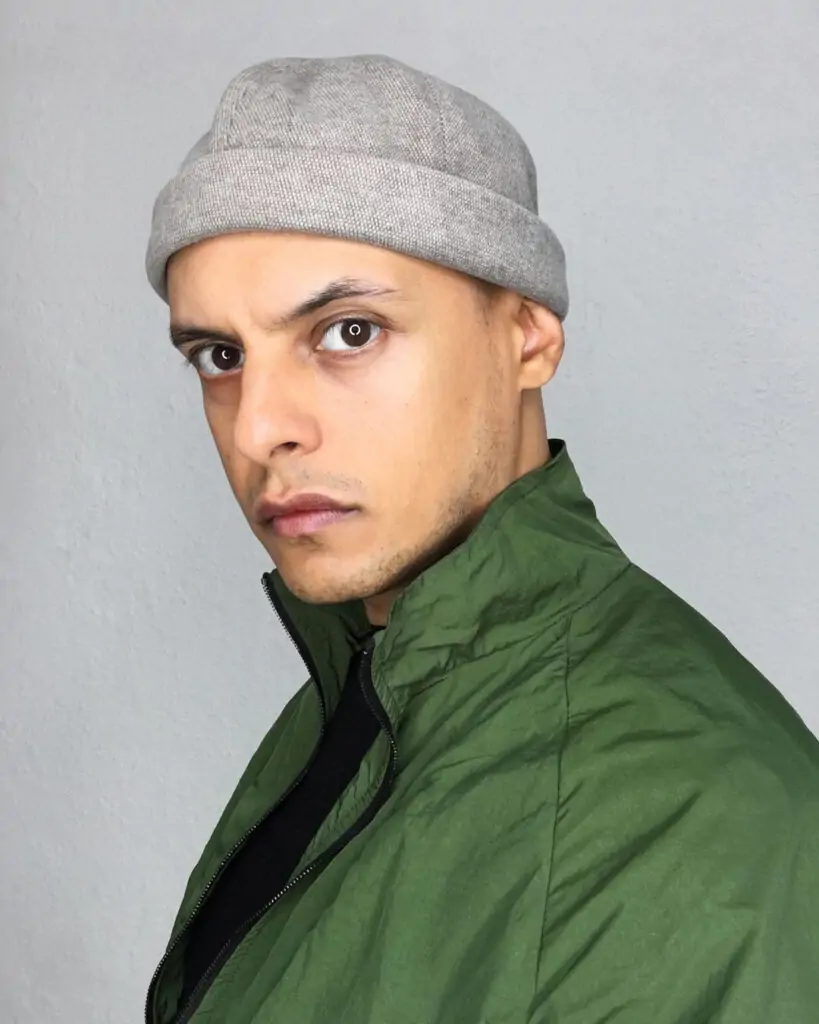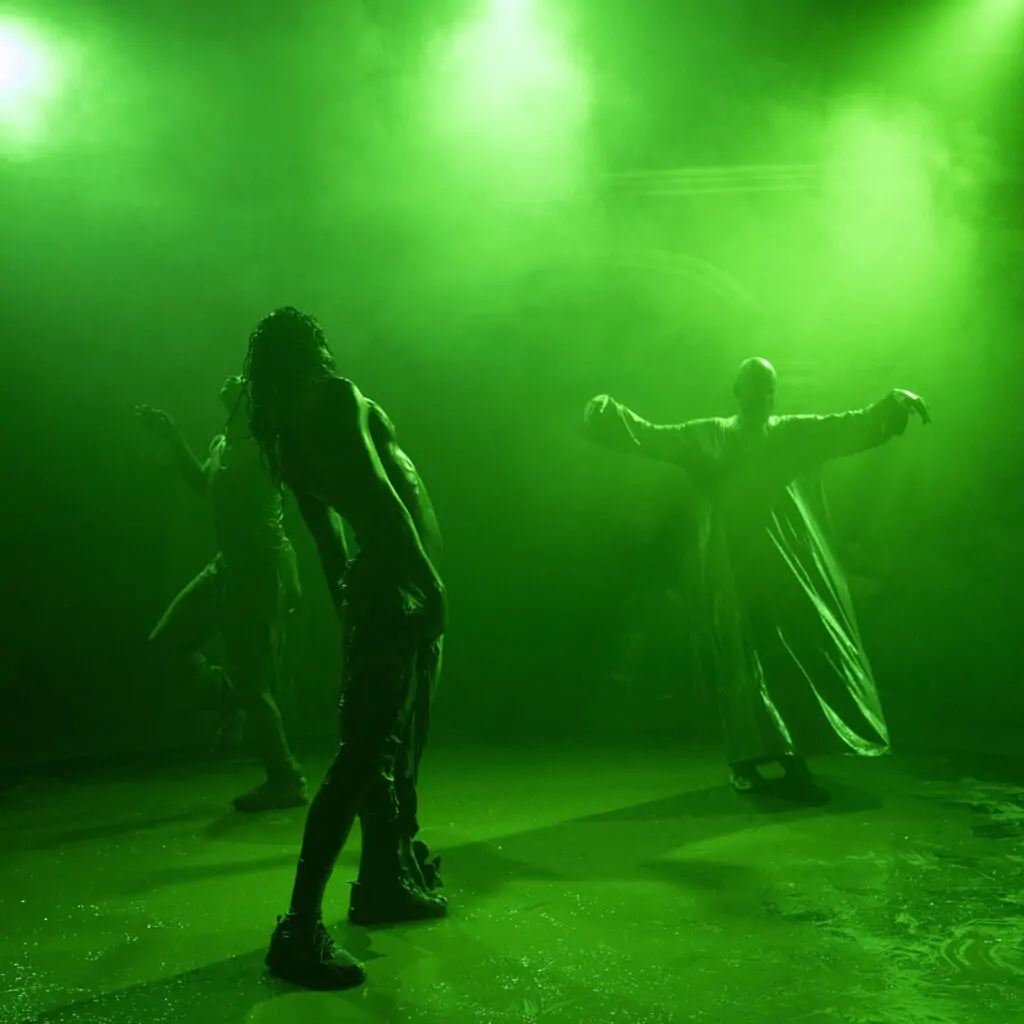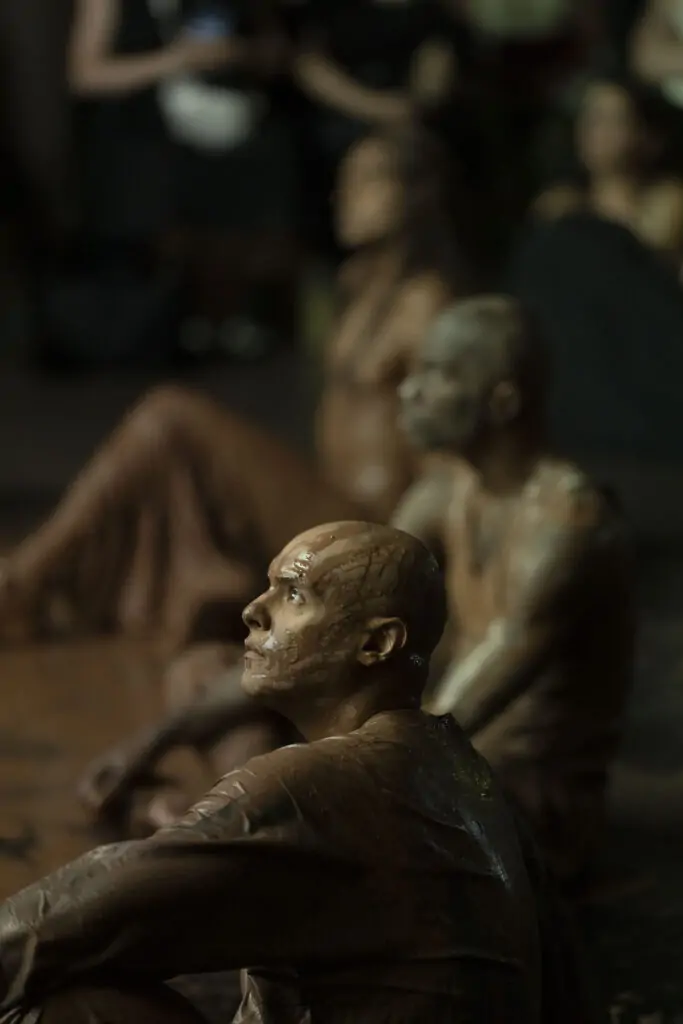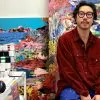Adham Faramawy Explores Body, Nature, and Identity Through a Multisensory, Multimedia Practice
The work of London-based Egyptian artist Adham Faramawy spans various mediums, including moving images, sculptural installations, photography, print, and painting. Through their multifaceted practice, they examines concepts of materiality, touch, and toxic embodiment. These mediums serve as a platform for a provocative dialogue that questions the essence of the natural world, its intersection with the body, and identity construction within marginalised communities.

Image courtesy of the artist
My work often starts with the body, with lived experience
Adham Faramawy
Faramawy’s work encourages reflection and awareness of the interplay between these elements, highlighting their impact on those often left at society’s margins and their broader societal implications. Their creative process is deeply personal, often starting with their own body and experiences, thus grounding their work in personal sentiment.
These consequential connections manifest in various forms of art, such as writing, dance, video, sculpture, and painting. This variety reflects the complexity of their experiences and aims to foster a deep emotional connection with the audience. Art, culture, and creativity have always been integral to Faramawy’s life, woven into the fabric of their lineage. Their father, an artist, while their mother, a journalist, explored feminist thought and women’s experiences. These intellectual and creative foundations are evident throughout Faramawy’s practice.
In his latest project, ‘Daughters of the River,’ created in collaboration with Serpentine, Faramawy incorporates dance, sound, and spoken word. This work explores the romantic and toxic associations with rivers and waterways, drawing inspiration from Alexander Pope’s poem ‘Windsor-Forest.’ The performance takes the audience on a fluid journey, exploring the porous borders between purity and impurity. Faramawy traces the imperialist roots of these waterways, highlighting their roles as both life-giving forces and symbols of historical exploitation.
Faramawy has exhibited his work at prestigious institutions, including the Guggenheim Museum in New York, Tate Modern, Tate Britain, and Serpentine Gallery. Recent exhibitions have featured his work at Buffalo University Gallery, Somerset House, and Goldsmiths Centre for Contemporary Arts. Notably, they recently reimagined the Pride Flag, which was displayed earlier this year in London’s Piccadilly.
Faramawy’s performance pieces are influential; the body becomes a vessel for unheard voices’ theatrical performance of sensory engagement. Creating spaces for alternative narratives can flourish, fostering dialogues around gender, colonialism, and identity, encouraging a reexamination and reimagining of these matters. We had the opportunity to speak with Faramawy shortly after his performance to delve deeper into his practice.
Hi Adham, thank you for speaking with us. Could you introduce yourself to those who may not yet be familiar with you and your work?
Adham Faramawy: I’m Adham Faramawy. I’m an Egyptian artist based in London. I work in a wide variety ways thinking about materiality, touch and toxic embodiment to question ideas of the natural in relation to marginalised communities.

Image courtesy of the artist and Serpentine
Could you share some early moments from your journey into the arts and explain what motivated you to pursue the path of an artist?
Adham Faramawy: My father was an artist working in paint, drawing, assemblage and ceramics. He was a musician, a poet, a playwright, an actor and a broadcaster. My mother is a journalist focused on feminist and women’s interest subjects. Art, culture and creativity have always been close to home for me and my sister.
Given your diverse use of media how do you maintain a cohesive narrative or thematic continuity across such varied forms as moving images, sculpture, photography, and painting? Are there particular narrative techniques or thematic elements that you find particularly compelling in bridging these different media?
Adham Faramawy: I think that for me, in a lot of ways the medium is secondary, maybe even tertiary. My work often starts with the body, with lived experience, and I’ve spent the last few years writing, making dance, video, sculpture and painting as a way to tell non-linear stories to explore and share my experience.
As an artist of Egyptian descent, your personal experiences and cultural heritage undoubtedly play a significant role in your practice. Are there any specific cultural or historical references that you draw upon to inform and enrich your artistic exploration?
Adham Faramawy: Being Egyptian is important to me, but I was born in the Emirates and grew up in England, spending only one year at school in Egypt. This left me with questions around cultural identity and belonging. What is it to belong to a culture? Which experiences or forms of heritage shape how we identify and behave?

Image courtesy of the artist and Serpentine
“Daughters of the River” traces the imperialist roots of popular waterways and identifies them as sites of ecological collapse. How do you fuse historical, mythological, fictional, and queer narratives to expose these colonial undercurrents? What message do you hope to convey about the relationship between colonial history and contemporary ecological issues?
Adham Faramawy: I understand European colonialism and empire-building as the foundation of contemporary capitalism, an ideology that relies of exploitation and extraction with the goal of endless expansion and amassing of wealth. But exploiting people comes with cruelty, and exploiting natural resources is killing the planet we live on.
Our resources are finite and maybe looking to the past might help us to understand how we got here, to denaturalise the ways we behave and make decisions. Maybe in telling stories, we can learn together that we haven’t always prioritised money over life. Maybe this might help us find our way through the human-made collapse of the ecologies we live within and depend upon.
What drew you to Alexander Pope’s poem “Windsor-Forest” as a source of inspiration for your performance? How do you reinterpret or subvert its themes to align with your exploration of ecological and colonial issues?
Adham Faramawy: I drew on Alexander Pope’s poem ‘Windsor Forest’, for my live performance ‘Daughters of the River’, which I performed with two dancers and a flautist, first in 2022 for the Serpentine Gallery’s Queer Earth and Liquid Matters symposium, and then again in 2024 in a more developed form for the Serpentine Infinite Ecologies Marathon. One of the etchings that illustrates the poem depicts a group of water nymphs frolicking in the Thames, and this is where I drew the title of the work.
Alexander Pope was an English poet of Catholic faith, living at a time when people of his denomination were persecuted by the government and there was legislation preventing them from attending university, teaching, voting, holding public office or living within 10 miles of Westminster, the seat of power in England. So his family moved to a small estate near Windsor where he wrote the poem, parts of which glorify the ruling class of the day and celebrate the treaty of Utrecht, a political agreement that undermined Spanish and French economic superiority in Europe and laid the foundation for the building of the British Empire.
Though Pope was part of an oppressed minority, he still allowed his art to be used to celebrate his oppressor, and his complicity in celebrating the founding of systems that we still live under and are oppressed by today makes him an interesting figure for me.
‘Windsor Forest’ focuses on the Thames as a political and economic tool, but also as a site of mythology and wonder. It uses a medieval reimagining of the story, which explains the root of the word Tamesis, one of the early names of the river Thames, saying it was the result of the marriage of Old Father Thame, the god and personification of the Thames, to the Egyptian goddess Isis, whose tears flood the river Nile. Parts of the Thames around Oxford are still called the Isis even now. This gave me a route into exploring ancient attitudes to water and the sacred river Nile, as well as the British colonial project in Egypt.

Image courtesy of the artist and Serpentine
Looking to the future, how do you see your work evolving? Are there new media or techniques you are interested in experimenting with to investigate further the relationship between materiality, the body, and marginalised communities?
Adham Faramawy: Currently I’m doing a lot of painting and sculpting. I’m working towards a solo show at Focal Point in Southend opening in September 2024, as well as a show at Niru Ratnam Gallery, London, in 2025.
I’m working on two videos. One is a work titled ‘Birds of Sorrow’ commissioned by Create, which looks at bird life and air pollution around the Thames in Barking and Dagenham in east London.
The other video titled ‘The Cyclamen and the Cedar’, is the culmination of my ‘UAL 20/20’ residency focused on decolonising art collections of national significance. I’ve been a resident at Kettle’s Yard, the house museum in Cambridge and I’ve been reading up on the house’s original owners’ Jim and Helen Ede’s time spent living in colonial Morocco. On and off for twenty years, the Ede’s lived in a Modernist house called ‘Whitestone’ near Tangier, where they hosted European and American dignitaries and the cultural elite passing through Tangier between the 1930s-1950s, as well as their long-time project of inviting British service men based in barracks in Gibraltar, to stay at their home each weekend sharing their art and their lifestyle at the house which was a kind of blueprint for Kettle’s Yard.
The Ede’s are well known as hosts whose close friendships with artists helped them become collectors of important British Modernist artists. The Ede’s lived in Morocco at the height of Arab Modernism but made no connections with North African artists and collected no Moroccan art, focussing on earthenware, rugs and furniture.
I’ve been learning about the significance of the cut flowers in the house, as well as researching plants and flowers depicted in the permanent collection as a way to start work on a performance for camera piece exploring the complexities of the relationship between the host and the guest, thinking about the racialised hierarchies evident in the Ede’s time in Morocco, but also what it means for me as a North African to be artist in residence there now.
What happens when a private space, a private collection of works, becomes a public gallery? Who is the work for, which parts of the community are welcomed and who gets erased?
Lastly, could you share your philosophy of art with us? How do you define and appreciate the fundamental significance of art in your life and career?
Adham Faramawy: I’m not sure if I have a philosophy exactly. I know that I find rules upsetting, that the culture I live in wasn’t built for me. I know that I want my work to make space to resist and to be available to anyone that wants to experience it. I want to tell nuanced stories from my own perspective, and I hope that telling stories the way I see them might foster more kindness in the ways we treat each other and the other living things we share the land, the water and the air with.
©2024 Adham Faramawy, Serpentine Galleries





